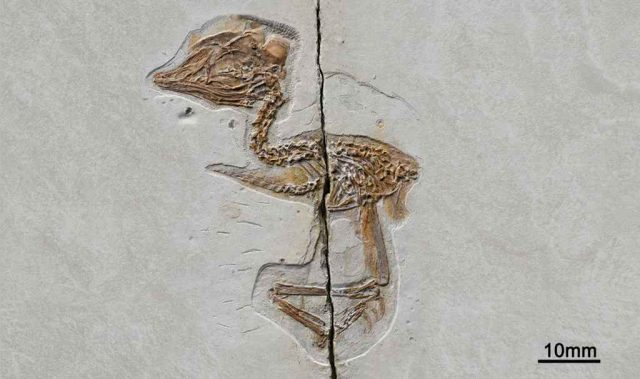
AsianScientist (Feb. 25, 2016) – An international team of scientists has shed new light on some unusual dinosaur tracks found in Gansu Province in northern China. Their work has been published in Scientific Reports.
The tracks appear to have been made by four-legged sauropod dinosaurs, yet only two of their feet have left prints behind.
Previous studies of such trackways have suggested that the dinosaurs—which were far too big to walk on their hind legs—might have been swimming, imprinting into the sediment as they paddled along. Scientists agree that dinosaurs could swim, as nearly all animals can; but evidence for swimming has been disputed.
The present study, led by the China University of Geosciences in Beijing and including palaeontologists from the University of Bristol in the UK, has provided evidence that some feet-only tracks were produced by walking, not swimming animals.
The tracks, dating from the Lower Cretaceous over 120 million years ago, are roughly circular and with a clear set of four or five claw marks at the front. These prints are matched perfectly by the feet of medium-sized sauropod dinosaurs, massive long-necked, plant-eating dinosaurs such as the Brontosaurus and Titanosaurus. But how could only the prints of the hind feet be preserved?
“Nobody would say these huge dinosaurs could stagger along on their hind legs alone—they would fall over. However, we can prove they were walking because the prints are the same as in more usual tracks consisting of all four feet. It’s just that here, we don’t see the hand prints,” said lead author, PhD candidate Mr. Xing Lida.
“If they had been swimming, with the hind legs dangling down, some of the foot prints would be scratch marks, as the foot scrabbled backwards.”
The tracks are well preserved, but there is evidence the animals were walking on soft sand. They pressed down because of their weight, and the claws dug deeper so they could gain purchase in the sediment. Most of the animal’s weight was towards the rear, and so the hind feet pressed deeper. The front feet, on the other hand, did not apply enough pressure to make a lasting mark.
“This is not to say that sauropods did not swim. We are simply suggesting that a closer study of the details of fossil footprints and the sediments can suggest a rather less romantic idea,” said co-author Professor Mike Benton.
“The loss of hand prints is down to sedimentology, not dinosaur behavior.”
The article can be found at: Xing et al. (2016) Digit-only Sauropod Pes Trackways from China – Evidence of Swimming or a Preservational Phenomenon?.
———
Source: University of Bristol; Photo: U.S. Fish and Wildlife Service Northeast Region/Flickr/CC.
Disclaimer: This article does not necessarily reflect the views of AsianScientist or its staff.












